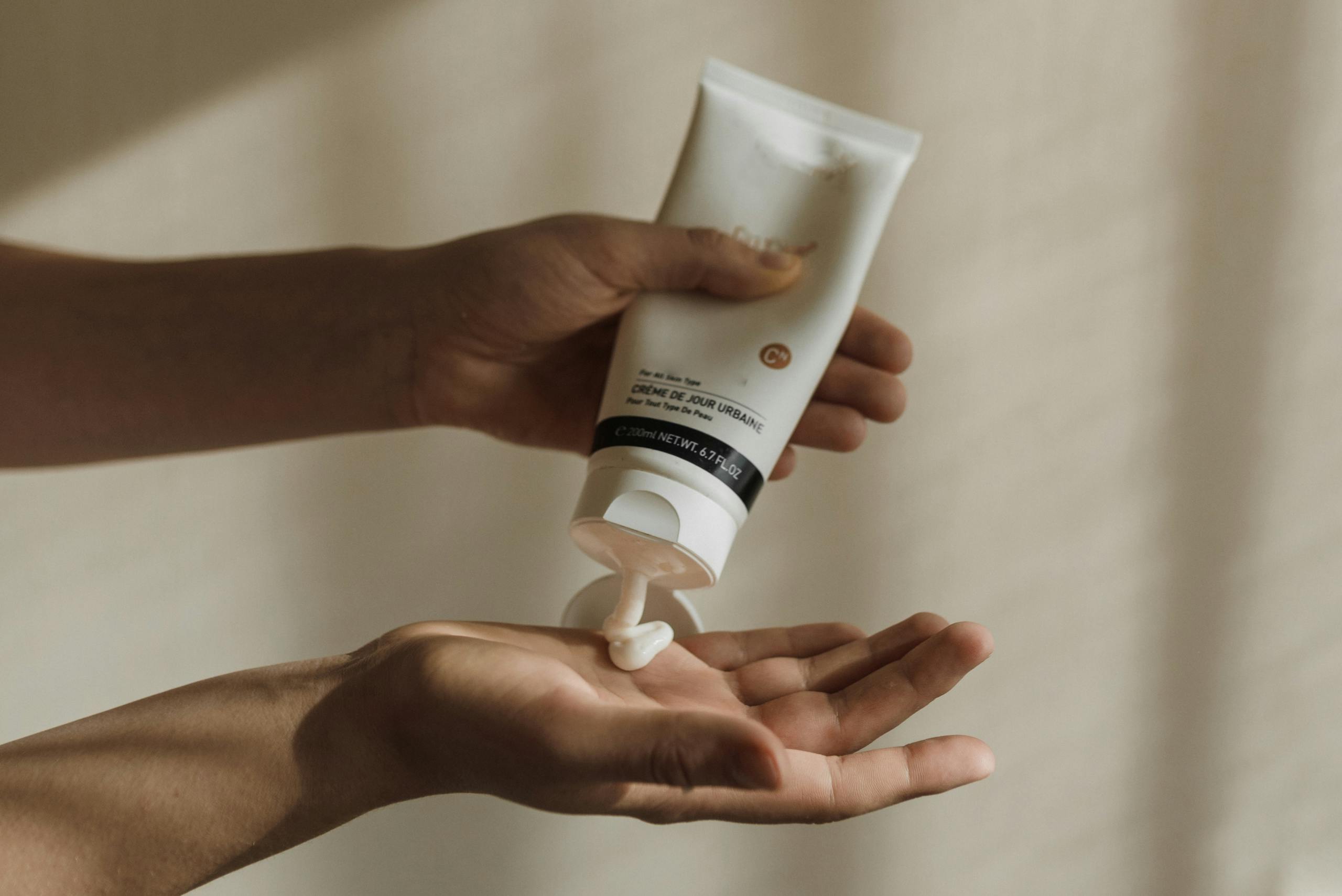Just like choosing the right paint for your project, selecting between water-based and oil-based products can significantly impact your results. Understanding the differences between these two types can help you make informed choices that suit your needs. Water-based products are typically easier to clean and dry faster, making them a convenient choice for everyday use. On the other hand, oil-based products often provide a more durable finish and are better for extreme conditions. By knowing these distinctions, you can ensure that you achieve optimal results in your applications.
The Chemistry Behind the Choices: Water-Based vs. Oil-Based
Molecular Structure and Behavior
The molecular structure of water-based and oil-based products largely dictates their behavior and application. Water-based products consist primarily of water as the solvent, with a mix of polymers and additives suspended in it. The hydrogen bonds in water molecules contribute to their polar nature, which enables them to disperse and spread easily across surfaces. This characteristic allows for fast drying times and easy cleanup with soap and water, making water-based options particularly user-friendly.
On the other hand, oil-based products utilize organic solvents, such as mineral spirits or turpentine, making them non-polar. This difference in polarity gives oil-based products distinct advantages in durability and resistance to wear, as their molecules create a thin, hard film upon drying. You may find that oil-based paints adhere better to surfaces and provide a richer finish, but the trade-off includes longer drying times and more complicated cleanup processes.
Solubility and Emulsification
Solubility plays a fundamental role in the effectiveness of both water-based and oil-based products. Water-based formulations uniformly mix with water, which means they can easily emulsify without separating. You can rely on maintaining consistency in application, as the product remains stable throughout its shelf life. In contrast, oil-based products require the specific use of organic solvents for thinning and cleanup, which can complicate their use and maintenance. This property also creates challenges in achieving uniformity if not mixed properly, potentially impacting the final results.
In practical terms, water-based products are less likely to encounter problems with stratification or separation, allowing for consistent performance, which is vital for painting or coating projects. However, the effectiveness of oil-based products in specific conditions—like high humidity—could lead to superior results where durability and resistance to moisture are concerned. Emulsification and solubility dictate the product’s application methods and the environments in which they perform best, showcasing the nuanced considerations in your project selections.
Impact on Application: Texture and Finish
Feel and Aesthetic Outcomes
The texture and finish of your project greatly depend on whether you opt for water-based or oil-based products. Water-based products typically dry to a matte or satin finish, offering a clean and crisp appearance that emphasizes the substrate’s natural properties. You might find that these finishes don’t provide the same depth or richness in color as their oil-based counterparts. On the other hand, oil-based products are known for their high-gloss finishes that can add warmth and vibrant hues, creating a palpable depth. When selecting between the two, consider whether you prefer a more subtle look, best achieved with water-based options, or a brilliant, vibrant finish characteristic of oil-based products.
The actual feel of the surface after application is another aspect to consider. Water-based finishes tend to have a softer feel and often remain slightly flexible once dried. This is ideal for items that will see regular use, such as furniture or cabinetry. Conversely, oil-based finishes harden more thoroughly, offering a tougher exterior that can withstand wear and tear more effectively. This durability comes at a price, however; the resulting finish may feel less forgiving, potentially resulting in a brittle surface that can chip or crack under severe impact.
Drying Times and Layering Techniques
Drying times between water-based and oil-based products differ significantly and can affect your intended application techniques. Water-based products dry quickly, often within 30 minutes to an hour, allowing you to apply multiple coats in a single day. This rapid drying time is advantageous if you want to complete your project in a short timeframe or experiment with layering techniques. However, it requires careful attention since you have less time to manipulate the paint once applied. In contrast, oil-based products can take anywhere from 4 to 8 hours to dry, with some formulations even requiring overnight curing. This extended drying time allows for a more deliberate application process, but it can also extend the overall length of your project significantly.
When using water-based paints, layering can achieve varied textures and colors with relative ease, making it suitable for intricate designs or patterns. You can apply lighter coats to gradually build up color vibrancy without overwhelming the underlying layers. With oil-based products, the slower drying time permits you to achieve a smooth finish but can complicate layering techniques. It’s generally best to apply heavier coats initially and then follow up with touch-ups rather than trying to layer thinner applications, which may not adhere as well. Understanding each product’s unique drying characteristics will empower you to achieve the best possible results in your application.
Skin Compatibility: Allergies, Sensitivities, and Skin Types
Your skin’s compatibility with water-based and oil-based products can vary considerably depending on your specific skin type and any underlying sensitivities. This is vital to assess before committing to a product. Allergies to certain ingredients may arise, making some products unsuitable for your skin. Understanding your personal sensitivities and how your skin reacts to different formulations can help you maintain its health; you’ll want to listen closely to the signals your skin sends.
| Skin Type | Product Recommendation |
|---|---|
| Oily | Opt for water-based products as they are lighter and less likely to clog pores. |
| Dry | Oil-based products provide additional moisture and can help reduce flakiness. |
| Sensitive | Consider water-based products due to their gentler formulations. |
| Combination | A mix of both types may work best, applying oil-based products to drier areas and water-based to oily zones. |
| Normal | Fewer restrictions; assess comfort over specific types. |
Assessing Suitability for Different Skin Types
Analyzing the suitability of water-based versus oil-based products hinges on understanding your specific skin type. Individuals with oily skin should gravitate towards water-based products, as these are less likely to cause breakouts, reducing the chance of aggravating oily patches. Conversely, if your skin tends to run dry, oil-based options offer important moisture that can keep your complexion nourished and healthy.
Those with sensitive skin need to tread carefully. Check the ingredient lists for potential allergens and choose formulations designed to minimize irritation. For combination skin, a tailored approach may yield the best results—apply lightweight, water-based formulas to oilier areas and heavy-duty, oil-based products to dry patches. Overall, understanding your skin’s requirements ensures you select the ideal product for your needs. Perceiving your skin’s unique characteristics will guide your choices effectively.
| Potential Reaction | Warning Signs |
|---|---|
| Redness | Look for patches or comprehensive redness after application. |
| Itching | A tingling or itchy sensation often indicates an allergic reaction. |
| Swelling | Localized swelling is a clear sign to discontinue use. |
| Bumps or Breakouts | Development of small bumps or acne is a major red flag. |
| Rashes | Observe the skin for rashes that develop following application. |
Potential Reactions: What to Watch For
Your skin can respond unexpectedly to different product ingredients, making vigilance necessary during your skincare routine. Before fully committing to a new water-based or oil-based product, patch testing is advised. Applying a small amount of the product to a discreet area, like the inside of your wrist, allows for a more manageable way to monitor reactions. It’s important to wait 24 hours to see any signs of irritation before moving forward with broader use.
If you notice any signs of adverse reaction, it’s best to err on the side of caution and discontinue the use of the product in question. Responses like redness, burning, or breakouts can aggravate your skin condition or lead to long-term complications, so keeping a close eye on your skin’s behavior is paramount. Perceiving these reactions early can save you from further discomfort and help maintain optimal skin health.
Environmental Considerations: Eco-Friendliness and Sustainability
Biodegradability and Pollution Factors
Evaluating the ecological impact of your chosen products often leads to considerations of biodegradability and how they affect pollution levels in your environment. Water-based products typically contain fewer harmful ingredients and are more likely to break down naturally, reducing their environmental footprint. This biodegradability means that when these products eventually wash away, they do so with a lesser chance of polluting water sources.
On the other hand, oil-based products tend to contain additives like solvents that can be slower to decompose. These substances can leach into the soil and waterways, contributing to long-term pollution issues, especially if not disposed of correctly.
- Water-based products are more biodegradable.
- Oil-based products can introduce more harmful solvents.
- Dispose of oil-based products properly to minimize pollution risks.
Perceiving the full environmental impact of your choices—whether they’re in your personal care routine or DIY projects—requires careful consideration of how your selected products interact with nature.
VOCs and Their Impact on Indoor Air Quality
Volatile organic compounds, commonly referred to as VOCs, are found in many oil-based products, including paints, finishes, and adhesives. These compounds have the potential to evaporate at room temperature, releasing harmful chemicals into the air you breathe. Extended exposure to VOCs can lead to a range of health problems, from headaches to more severe respiratory issues. In contrast, water-based products generally emit fewer VOCs, making them a safer choice for maintaining better indoor air quality.
Indoor spaces can sometimes trap pollutants, leading to a build-up of harmful substances, particularly if ventilation is limited. Opting for low-VOC or no-VOC water-based products can significantly enhance your home’s air quality while contributing to a healthier living environment. For example, choosing a water-based paint for your home renovation may lead to quicker project completion and a more breathable atmosphere in your home during and after application, benefiting both you and your family.
Product Longevity: Wear, Tear, and Storage Life
Durability of Water-Based vs. Oil-Based Coatings
Water-based coatings typically exhibit a shorter dry time compared to their oil-based counterparts, which can influence their overall durability. While water-based products tend to be easier to work with, they also have a reputation for being *less durable*. These coatings may be more susceptible to wear, particularly in high-traffic areas or where moisture is prevalent, such as kitchens and bathrooms. On the other hand, oil-based products develop a stronger film upon curing, leading to improved resistance against scratches, stains, and fading over time. For projects where durability is non-negotiable, such as woodworking or furniture finishing, oil-based coatings can often provide that extra margin of safety.
The toughness of an oil-based finish, however, does come with its own trade-offs. Longer drying times can delay project timelines and increase the risk of dust and debris settling on the surface before it cures. Additionally, you may find that maintenance is a bit more involved, as oil-based finishes can require more effort for eventual touch-ups and refinishing. Understanding these trade-offs allows you to choose the right product based on your specific durability needs.
Proper Storage Practices for Optimal Shelf Life
Storing both water-based and oil-based products under appropriate conditions can dramatically extend their shelf lives. Water-based coatings generally last longer than their oil-based counterparts when stored correctly, often remaining usable for up to five years if kept in a sealed container and away from extreme temperatures. The paramount concern for water-based products is freezing; once frozen, they typically lose their effectiveness. Conversely, oil-based products can spoil more quickly, especially if the container is opened frequently or left exposed to air. Aim to keep oil-based products in a cool, dry place and always ensure the lid is tightly closed when not in use.
For maximizing the lifespan of your coatings, consider labeling the date of purchase on the container to track how long you have had it, and ensure to follow the manufacturer’s recommendations for both storage and disposal. Protecting your investment not only saves money but also guarantees you’re equipped with the best materials for your next project.
Cost Analysis: Budgeting for Your Beauty or Home Improvement Needs
Initial Investment vs. Long-term Value
Your initial investment in water-based or oil-based products can vary significantly, affecting your overall budget. Water-based products typically have a lower upfront cost. For example, a gallon of quality water-based paint may range from $20 to $40, making it more accessible for projects where you need to cover large areas. On the other hand, oil-based products can cost between $30 and $60 per gallon, adding to the burden if you’re working on a bigger project.
Considering long-term value, water-based options often win due to their easier clean-up and faster drying times, which can save you time and effort. Oil-based products might provide a *stronger*, more durable finish, especially for surfaces that undergo wear and tear. However, their maintenance can become a costly affair, as they can require more frequent repaints or touch-ups, stretching your budget in the long run.
Price Range of Popular Brands
The price point of brands plays a significant role in your decision-making process. For water-based paints, established brands like Sherwin-Williams and Benjamin Moore offer a wide variety of products ranging from $30 to $75 per gallon, depending on the finish and specialty. In contrast, oil-based options from the same brands can start at about $25 but may climb to over $90 for specialty formulas or premium lines.
When exploring popular beauty products, you can find water-based foundations from well-known brands like Fenty Beauty or Maybelline starting around $10 to $50, while premium oil-based alternatives, like those from Giorgio Armani or NARS, often see prices soaring between $40 and $80. This range indicates how much you can expect to spend based on your preference for quality and brand loyalty, and your project needs can strongly dictate the final cost.
Practical Applications: Choosing the Right Product for Your Needs
Best Uses for Water-Based Products
Water-based products excel in environments where ease of clean-up and lower toxicity are priorities. For home improvement projects, such as interior painting, water-based paints offer exceptional ease because they allow for quick washing of brushes and spills using just soap and water. This also means reduced odors and relatively quick drying times, making it possible to complete jobs faster and with minimal disruptions. Moreover, when you consider options like acrylic paints or water-based stains, these products not only provide beautiful finishes but also adhere well to both primed and unprimed surfaces, which can be advantageous for DIY enthusiasts.
In personal care, water-based skincare products are ideal for those with oily or acne-prone skin, as they tend to hydrate without adding excess grease. For example, water-based moisturizers and serums can deliver moisture and nutrients effectively, minimizing the feeling of heaviness on the skin. Additionally, if you’re looking for nail polishes, water-based options often have fewer harsh chemicals and are more breathable, making them suitable for those who prefer a gentler approach to beauty.
Scenarios Ideal for Oil-Based Products
Oil-based products shine in applications that require durability and a high level of moisture resistance. For instance, when considering outdoor furniture finishes or decks, oil-based stains penetrate deeply into the wood, providing a lasting protective barrier against the elements. These products typically perform better in high-traffic areas since they offer resilience that water-based formulas often lack. When restoring vintage furniture, an oil-based approach can highlight the wood’s natural grain while also providing that rich, warm finish that many desire.
It’s common to encounter oil-based primers and paints in professional settings, particularly in industrial applications or for achieving high-gloss finishes on surfaces like cabinetry and moldings. Their robust nature means they are less prone to chipping or fading over time, which is vital in applications that require a polished and long-lasting appearance. In scenarios where moisture exposure is high, such as kitchens and bathrooms, opt for oil-based products to ensure a finish that won’t buckle or peel in humid conditions. This selection process demonstrates an understanding of the specific requirements of your projects, allowing for informed decisions that yield satisfactory results.
Expert Recommendations: Insights from Professionals in the Field
Interviews with Dermatologists and Chemists
Consulting with dermatologists reveals that patients often achieve better results with water-based products, especially for facial applications. Dr. Smith, a well-respected dermatologist, states that these products are typically less likely to cause breakouts and provide excellent hydration without clogging pores. In contrast, Dr. Jones emphasizes that while oil-based products can offer deeper moisturization, they tend to be heavier and are generally better suited for dry areas of the body rather than the face.
Chemists also support the efficacy of water-based formulations for everyday use. John Doe, a prominent cosmetic chemist, points out that the solubility of water-based products ensures easier absorption into the skin, providing a lighter feel. Meanwhile, he explains that oil-based solutions can be more effective in specific formulations, such as certain serums and moisture-locking creams, where lipids are needed. These insights can help you tailor your product choice to your specific skin needs.
Tips from Craftspeople and Creative Professionals
Crafters often prefer water-based paints due to their easy clean-up and low odor, making them ideal for indoor projects. Experienced artist Linda notes that these paints dry quickly, allowing layers to be applied rapidly without significant wait time. On the other hand, oil-based products are praised by some for their impressive finish and durability, particularly for use on furniture and outdoor pieces. These items can withstand environmental exposure better than their water-based counterparts.
Craftspeople underscore the significance of selecting the right medium for your project. Jane, a furniture restorer, suggests that while using oil-based finishes can enhance the wood’s natural beauty, they require extra care and longer drying times. For instance, applying multiple coats of an oil-based product usually means you have to wait several hours between applications. The meticulous approach might be worth it for the final result, especially on high-value pieces. After your creative endeavor, deciding on the final finish will hinge on function and aesthetic preference.
- water-based products are often favored for their easy application and clean-up.
- oil-based products provide a long-lasting finish that can enhance the appearance of wood.
With experienced artists and crafters emphasizing the nuances between water and oil-based products, the choice ultimately mirrors your vision for each project. You may find that the meticulous process of working with oil-based finishes results in a beautiful, glossy effect that adds value to your creations. After carefully considering these expert insights, you’re better equipped to select the right products for your specific applications.
- finishes can dramatically affect the final appearance of your craft or project.
- solvent-based products might offer richer colors but require extensive safety measures during use.
Additionally, input from creative professionals suggests a careful balancing act when determining which product to choose. Working conditions, project durability, and even the desired visual outcome will all contribute to your decision. Utilizing both water and oil-based solutions in tandem can also be a strategic approach, blending the rapid application of water-based products with the lasting power of oil-based finishes. After weighing your personal and project needs, you’ll be able to make an informed choice that enhances your work.
To wrap up
Summing up, understanding the differences between water-based and oil-based products can significantly impact your choices in various applications, whether in painting, skincare, or cleaning. Water-based products are often easier to clean, quicker to dry, and generally less odorous, making them ideal for indoor projects and sensitive skin. On the other hand, oil-based products tend to provide a more durable finish, making them suitable for high-traffic areas or conditions where longevity is a priority. As you consider your options, evaluate the demands of your specific project or needs to determine which product type aligns best with your goals.
Your choice ultimately reflects not just the functionality but also the environmental impact and ease of use of the products you select. By weighing these factors against your specific requirements, you can make informed decisions that enhance your outcomes while also supporting a healthier lifestyle. Whether you opt for the versatility of water-based solutions or the robustness of oil-based alternatives, having this knowledge empowers you as a savvy decision-maker.







